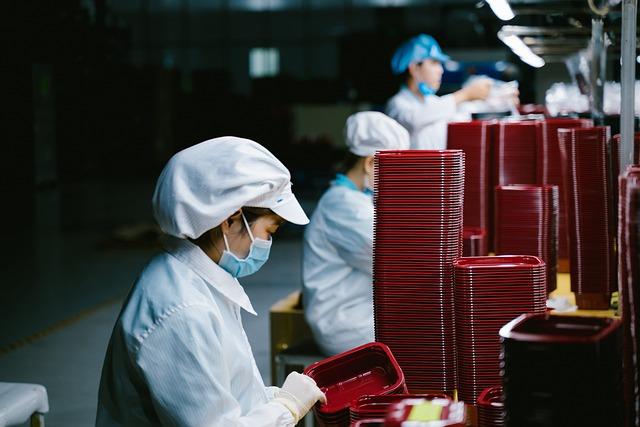In the bustling aisles of supermarkets and the charming stalls of farmers’ markets, a silent debate simmers, shaping the choices of conscious consumers and curious foodies alike: factory-farmed meat versus local meat. At first glance, the difference might seem as simple as the distance between a sprawling industrial farm and a quaint local ranch. However, beneath the surface lies a complex tapestry woven from threads of environmental impact, animal welfare, nutritional value, and economic considerations. As we embark on this exploration, we delve into the nuances that distinguish these two sources of our daily sustenance, seeking to understand not just what sets them apart, but what these differences mean for our plates, our planet, and our principles.
Factory-Farmed Meat: Understanding the Scale and Impact
The industrialization of meat production has transformed the landscape of agriculture, creating a system that prioritizes volume over quality. This approach has led to the establishment of massive facilities where animals are raised in highly controlled environments, often with limited space and unnatural diets. The impact of these operations is profound, influencing not only the quality of the meat but also the environment and local economies. Environmental concerns include significant contributions to greenhouse gas emissions, extensive water use, and pollution from waste runoff. Furthermore, the ethical implications of such practices are increasingly drawing public scrutiny.
On the other hand, local meat production typically emphasizes sustainability and animal welfare, often resulting in a product that is more aligned with traditional farming practices. Local farms tend to focus on smaller-scale operations, which can lead to several benefits:
- Reduced carbon footprint due to less transportation.
- Improved animal welfare with more humane living conditions.
- Support for local economies by keeping profits within the community.

Local Meat: Exploring Quality and Sustainability
In the pursuit of quality and sustainability, many consumers are turning their attention to local meat options. But what truly distinguishes local meat from its factory-farmed counterpart? One of the most striking differences lies in the farming practices themselves. Local farms often prioritize animal welfare and environmentally friendly methods, offering meat that is not only fresher but also raised in more humane conditions. On the other hand, factory farms focus on mass production, which can lead to overcrowded living conditions and increased use of antibiotics and hormones.
When considering the environmental impact, local meat can often be a more sustainable choice. Here are some benefits of choosing local meat:
- Reduced Carbon Footprint: Shorter transportation distances mean less fuel consumption and lower emissions.
- Support for Local Economies: Buying from local farmers helps sustain small businesses and supports community growth.
- Biodiversity Preservation: Local farms may employ practices that enhance soil health and maintain diverse ecosystems.
Ultimately, the choice between factory-farmed and local meat depends on individual priorities and values, but understanding these differences can empower consumers to make more informed decisions.

Nutritional Differences: Comparing Health Benefits and Risks
When comparing the nutritional profile of factory-farmed meat and local meat, several factors come into play. Local meat, often sourced from smaller, family-owned farms, tends to be raised with fewer hormones and antibiotics. This can result in a more natural nutrient composition. Studies suggest that pasture-raised meats might contain higher levels of omega-3 fatty acids, which are beneficial for heart health, and may also have a richer concentration of vitamins like vitamin E. On the other hand, factory-farmed meat is typically produced on a larger scale, which can sometimes lead to higher levels of saturated fats due to the animals’ diet and living conditions.
- Health Benefits of Local Meat:
- Potentially higher omega-3 fatty acids
- Lower levels of saturated fats
- Fewer hormones and antibiotics
- Risks of Factory-Farmed Meat:
- Higher likelihood of antibiotic resistance
- Possible higher saturated fat content
- Environmental concerns due to large-scale production
Ultimately, the choice between factory-farmed and local meat may hinge on personal priorities regarding health, taste, and environmental impact. It’s important for consumers to consider these factors and make informed decisions based on their individual needs and values.

Making Informed Choices: Tips for Selecting the Right Meat
When choosing between factory-farmed and local meat, it’s crucial to consider several factors that can influence your decision. Animal welfare is often a top concern, with local farms typically providing more humane living conditions compared to the often crowded and stressful environments of factory farms. Additionally, the environmental impact of your choice is significant; local farms usually have a smaller carbon footprint due to reduced transportation and more sustainable farming practices.
- Quality and Taste: Many argue that local meat offers superior taste and quality, as it is often fresher and produced on a smaller scale.
- Health Concerns: Local meats are less likely to contain antibiotics and hormones, which are commonly used in factory-farmed meat to promote growth.
- Economic Impact: Purchasing local supports your community’s economy, helping to sustain family farms and local businesses.
Concluding Remarks
As we reach the end of our exploration into the contrasting worlds of factory-farmed and local meat, it becomes clear that the choice between the two is not merely a matter of taste or price, but a reflection of values and priorities. Each path offers its own set of advantages and challenges, from the efficiency and affordability of large-scale operations to the sustainability and community support fostered by local producers.
The decision rests with the consumer, who stands at a crossroads where environmental impact, animal welfare, and personal health converge. As we navigate this complex landscape, perhaps the most important takeaway is the power we hold in our everyday choices. By staying informed and conscious of where our meat comes from, we can make decisions that align with our individual beliefs and contribute to shaping a food system that reflects our collective aspirations.
whether you find yourself drawn to the aisles of a bustling supermarket or the stalls of a local farmer’s market, remember that each purchase is a vote cast in the ongoing dialogue about the future of our food. As we close this chapter, the question remains: How will you choose to engage in this narrative? The answer is yours to define.




